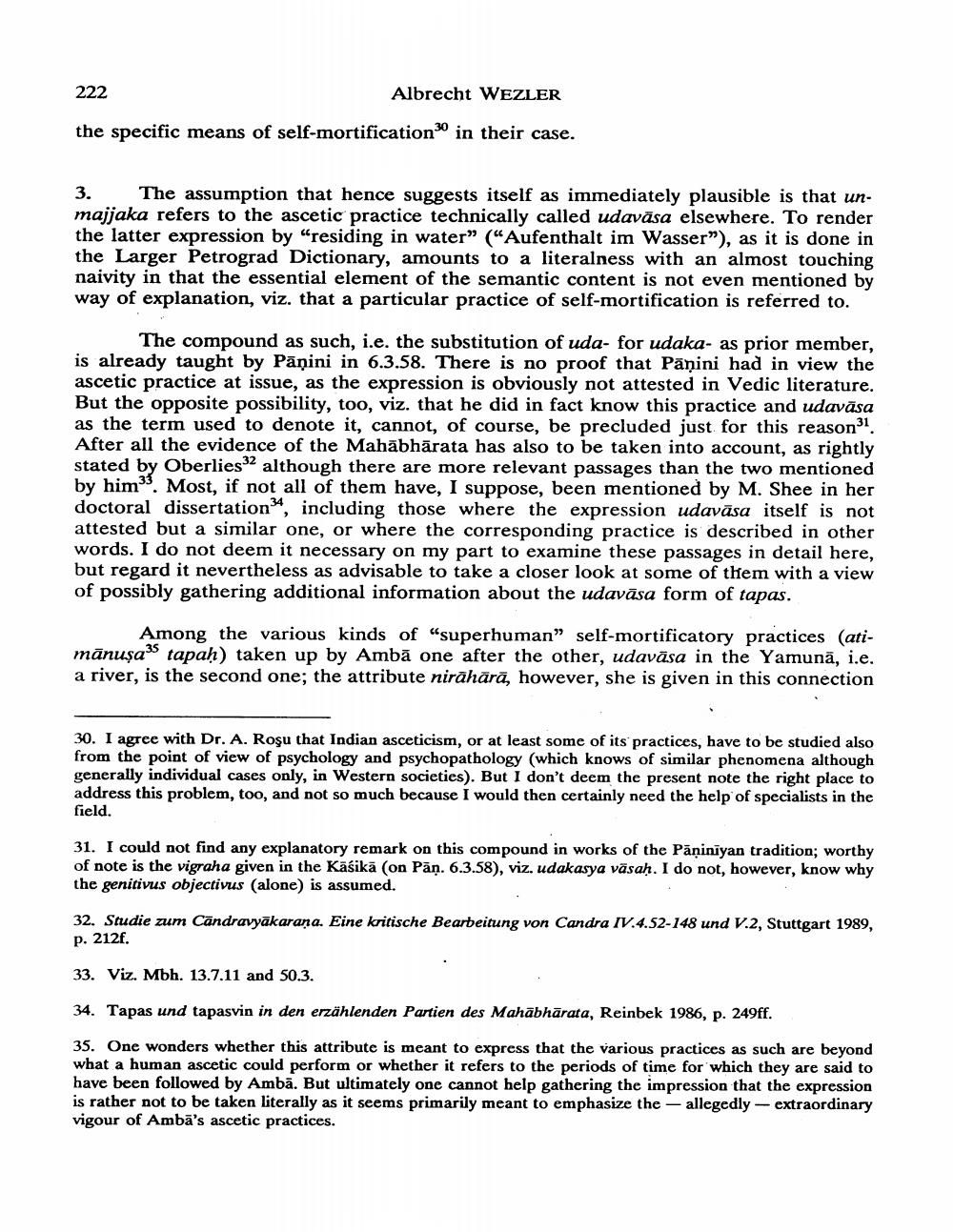Book Title: Note On Class Of Ascetics Called Unmajjaka Author(s): A Wezler Publisher: A Wezler View full book textPage 6
________________ 222 Albrecht WEZLER the specific means of self-mortification in their case. 3. The assumption that hence suggests itself as immediately plausible is that unmajjaka refers to the ascetic practice technically called udaväsa elsewhere. To render the latter expression by "residing in water” (“Aufenthalt im Wasser”), as it is done in the Larger Petrograd Dictionary, amounts to a literalness with an almost touching naivity in that the essential element of the semantic content is not even mentioned by way of explanation, viz. that a particular practice of self-mortification is referred to. The compound as such, i.e. the substitution of uda- for udaka- as prior member, is already taught by Pāṇini in 6.3.58. There is no proof that Pänini had in view the ascetic practice at issue, as the expression is obviously not attested in Vedic literature. But the opposite possibility, too, viz. that he did in fact know this practice and udavāsa as the term used to denote it, cannot, of course, be precluded just for this reason3l. After all the evidence of the Mahābhārata has also to be taken into account, as rightly stated by Oberlies 52 although there are more relevant passages than the two mentioned by him”. Most, if not all of them have, I suppose, been mentioned by M. Shee in her doctoral dissertations, including those where the expression udaväsa itself is not attested but a similar one, or where the corresponding practice is described in other words. I do not deem it necessary on my part to examine these passages in detail here, but regard it nevertheless as advisable to take a closer look at some of them with a view of possibly gathering additional information about the udaväsa form of tapas. Among the various kinds of "superhuman" self-mortificatory practices (atimānuşa3s tapah) taken up by Ambā one after the other, udaväsa in the Yamunā, i.e. a river, is the second one; the attribute nirāhārā, however, she is given in this connection 30. I agree with Dr. A. Roşu that Indian asceticism, or at least some of its practices, have to be studied also from the point of view of psychology and psychopathology (which knows of similar phenomena although generally individual cases only, in Western societies). But I don't deem the present note the right place to address this problem, too, and not so much because I would then certainly need the help of specialists in the field. 31. I could not find any explanatory remark on this compound in works of the Pāṇiniyan tradition; worthy of note is the vigraha given in the Kāśikā (on Pan. 6.3.58), viz, udakasya vāsah. I do not, however, know why the genitivus objectivus (alone) is assumed. 32. Studie zum Candravyākarana. Eine kritische Bearbeitung von Candra IV.4.52-148 und V.2, Stuttgart 1989, p. 212f. 33. Viz. Mbh. 13.7.11 and 50.3. 34. Tapas und tapasvin in den erzählenden Partien des Mahābhārata, Reinbek 1986, p. 249ff. 35. One wonders whether this attribute is meant to express that the various practices as such are beyond what a human ascetic could perform or whether it refers to the periods of time for which they are said to have been followed by Ambā. But ultimately one cannot help gathering the impression that the expression is rather not to be taken literally as it seems primarily meant to emphasize the allegedly - extraordinary vigour of Ambā's ascetic practices.Page Navigation
1 ... 4 5 6 7 8 9 10 11 12 13 14 15 16 17 18 19 20 21 22 23 24 25 26 27
